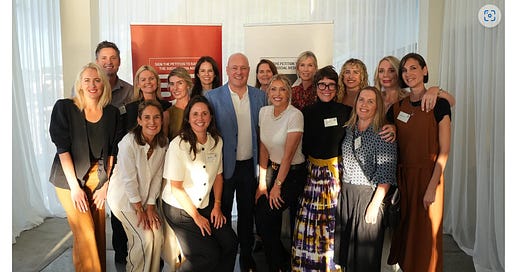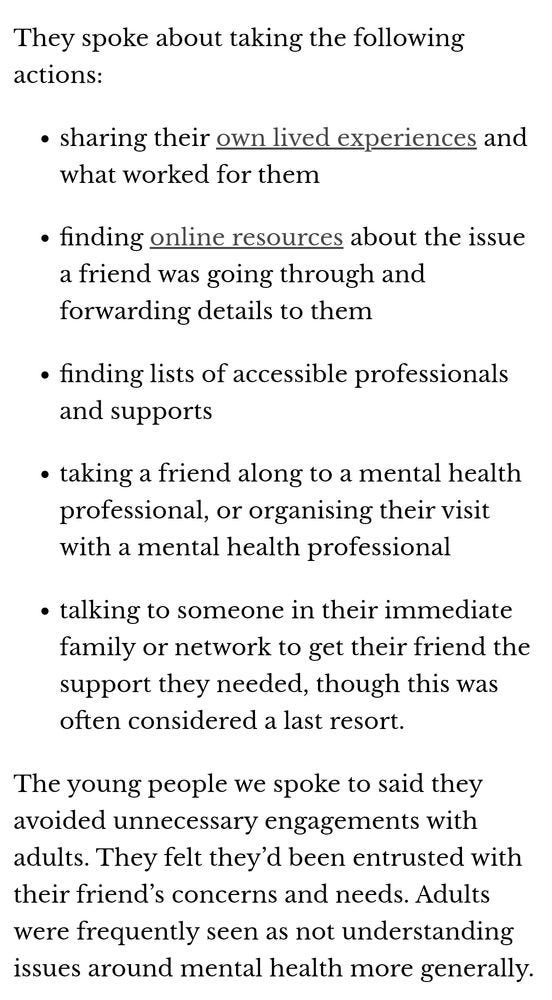It’s no surprise that a brand new campaign to ban social media for kids has magically arisen just as the Government is under significant pressure. The political timing is immaculate. B416 lands just as the National-led Government trashes 33 pay equity claims for women and changes the rules to make it harder to make a claim. Coincidence? Hardly. It's a hastily gift-wrapped distraction for a Government in desperate need of one. An easy, headline-grabbing fix that polls well with parents and a media hungry for distraction. It’s a smokescreen, deflecting attention from their pay equity debacle.
(Speaking of which,
has unearthed a wonderful clip of several National MPs (Erica Stanford, Nicola Willis, Louise Upston, and the late Nikki Kaye) passionately extolling the virtues and values of the Pay Equity Bill 2020 during it’s third reading. I digress).There is zero solidarity by the ‘wealthy and sorted’ crew of B416 with the working women impacted by the removal of existing pay equity claims. As
notes in his superbly titled “Luxon’s Ladies”,At a time when many women who do not usually speak out on political matters are saying enough and taking a stand, these women of immense privilege are opting for photo opportunities with the man ultimately responsible for throwing their sisters under a bus.
Perhaps we shouldn’t be too surprised. Wealthy white women have a history of aligning themselves with power rather than having solidarity with the working class. White-dominated feminism has far too often been a ready partner to capitalism, imperialism, and white supremacist thought. It makes sense in context that these wealthy white ladies are aligning themselves with a Government that is refusing to invest in pay equity.
So. What does help youth mental health?
One of the major supports for good mental health is growing up in stable, secure, warm, dry homes with plenty of nutritious food and regular meals. You know what helps that? Mums having well paid jobs with decent working conditions! Pay equity!! Oh, and decent school lunches too.
In a recent Op-Ed, the CEO of Barnardos Aotearoa noted the direct link between pay equity and child wellbeing, saying:
The recent changes to pay equity legislation risk making this even worse. While Oranga Tamariki social workers have fought for improved terms and conditions, many other workers are still waiting. Barnardos has led the push for pay equity across the community sector, but delays mean too many workers are being left behind.
It’s unjust, and it’s unsustainable.
We’re already seeing the consequences. Wait lists are growing. Services are being reduced or cut. Aotearoa doesn’t have enough social workers to keep up with demand, and we know fewer new social and community workers are staying — they’re burning out or leaving the profession altogether. When we lose them, we don’t just lose staff – we lose trusted relationships, deep community knowledge, and the ability to intervene early before crises escalate.
A social media ban is far simpler and easier than funding what is needed for high quality youth mental health care, such as paying decent wages for mental health nurses, ensuring decent working conditions for psychologists, creating manageable caseloads for psychiatrists, and so on.
What else helps? Decent working conditions for people who are working in mental health - the very health care workers and nurses whose pay equity claim has now been summarily dismissed. Decent working conditions means when you see someone, they have time, energy, and capacity to ensure high quality care at every level (one reason given for the recent case of an 11yo being injected with anti-psychotic medication is that staff at the hospital were so overrun they simply didn’t have time to check). Pay equity for health care workers and nurses would have assisted with addressing this.
What else helps? Being able to access mental health care and see a mental health professional early on, when first needed, before issues escalate. Yet, psychiatrists working in Aotearoa New Zealand have raised numerous issues with Health NZ, including workforce shortages, unsustainable workloads, burnout, inflexible conditions, poor management, and insufficient pay. It hasn't been sorted. Rotorua has had to cut their youth specialist mental health services as they cannot fill vacancies. This only lengthens waiting lists and exacerbates issues. Supporting hospitals to easily recruit staff, to employ sufficient staff, and to provide high quality working conditions, including offering pay equity, helps to address these issues.
Te Hiringa Mahara - Mental Health and Wellbeing Commission notes that young people are less likely to get help when its needed, and that is predominantly impacts lower income families:
"There has been a steady decline in mental wellbeing for young people more recently, with 1 in 5 young people experiencing higher rates of psychological distress than other age groups. At the same time, young people are less likely to get professional help for their mental health needs when they need it,” said Dr Ella Cullen, Director Wellbeing Insights and Leadership, for Te Hiringa Mahara.
Addressing the underlying causes behind poorer mental health for youth is an urgent priority. For example, households with young people residing in them are less likely to have enough income to meet everyday needs than households without young people present.
The Commission notes that addressing the underlying drivers of poor youth mental health requires addressing societal issues such as:
Increasing household incomes for lower waged families
Strengthening social connections
Facilitating trust
Fostering intergenerational connections
What else helps? Recent Australian based research with young people found that what they say works is having friend to talk to, access to mental health professionals, and online resources that speak to their reality:
In Aotearoa New Zealand, the Youth2000 survey series (a nationally representative study of secondary school students in NZ) found that young people from low-income households were significantly more likely to experience psychological distress, and that access to basic needs such as food, housing, and healthcare was a stronger predictor of wellbeing than individual or family-level risk factors. As noted by one participant in the Mental Health and Wellbeing Commission youth consultation (2023)
“My mental health is fine when our house is warm and my mum’s not stressing about bills.”
The Youth2000 survey also found that Māori and Pasifika youth experience higher rates of racism, discrimination, and socioeconomic exclusion, and that these experiences are strongly linked to:
Worse mental health outcomes
Higher suicide risk
Lower access to mental health services
Regarding solutions, young people have consistently called for school environments that are free from bullying, racial slurs, and bias, and for services that are culturally competent, where they can be heard and understood.
Social media bans are an easy way to look like something is being done for youth mental health, while doing precisely nothing about the underlying drivers (poverty, inequitable distribution of resources, underfunded mental healthcare, racism, bigotry, climate destruction).








Firstly, couldn't agree more. Also a couple of perspectives.
Radio, talking movies, the emergence of pop music, comics, and TV have all at some stage created moral panic focusing on the corruption of young people. And without exception there were calls to ban young people's access to all of these at some point.
None of these things have ended up being banned, instead regulation has been developed over time to manage them. It's hard to believe in this day and age, but at one stage in the late 19th century/early 20th century teenagers reading novels were going to be corrupted and turned into murderers because they had read novels!
Young people in New Zealand do indeed have mental health challenges, from where I'm sitting this has been around for a long time (I grew up in the Far North of NZ, and at the time I would have been considered a youth, I could get a second hand out to count the number of people I knew of who had committed suicide).
But if you look at the youth suicide rate per 100,000 it sat at 14.2 in 1996, and 10.2 in 2021/22. It ebbs and flows a little, but there is a downward trend over the time span this new tech has been introduced.
What the youth suicide stats do show is young Māori being disproportionally affected, so if you are serious about improving mental health, start listening to young Māori about what is affecting them.
I've included the links to the Ministry of Health and Mental Foundation statistics for anyone to take a look at.
https://www.health.govt.nz/publications/suicide-facts-data-tables-1996-2016
https://mentalhealth.org.nz/suicide-prevention/statistics-on-suicide-in-new-zealand
B416 is another Astroturf org. When you look at who is involved, it's like looking at the National Party donor list. And then take people like Cecelia Robinson, whose current grift is Tend healthcare. When you find out this is s telehealth org and that the Nats are heavily investing in telehealth rather than adequately staffing hospitals, you might understand why she'll turn up to support Luxon. Yuck.